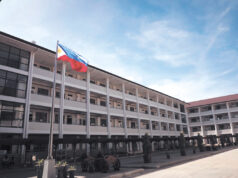The current administration inherited a robust economy from its predecessor. And exactly two years after President Rodrigo R. Duterte assumed the office, the economy stays strong and is expected to grow steadily in the succeeding years.
Early last year, the Department of Finance (DoF) and the Presidential Communications Operations Office (PCOO), in cooperation with the Center for Strategy, Enterprise & Intelligence (CenSEI), unveiled the administration’s economic and development blueprint for the country called “DuterteNomics.”
According to Executive Secretary Salvador Medialdea, the DuterteNomics started out with a simple yet pragmatic economic strategy — rid the streets of criminals, free the people from the menace of drug abuse, bring lasting peace to the southern islands and neutralize extremist and terrorist groups.
During the campaign period for the 2016 presidential election, President Duterte projected a very different image from other candidates. As early as these days, he made it clear that he would focus on suppressing illegal drugs because it destroys the hope and future of the country — the Filipino youth.
The government’s fierce anti-drug campaign was able to lower the prevalence of illegal drug use in communities. It marks the first time in the Philippine history that the government pursued a serious effort to fight illegal drug abuse from national down to community level. However, the campaign has gained criticisms in and outside the country, putting the government through a number of controversies.
The administration is also pulling out all the stops to fight crime and the spread of terrorism across the country by focusing its efforts on major crimes while pursuing an all-out offensive against terror groups.
“The concept is easy to understand: restore peace and order and the rule of law, and everything else will follow, including economic and social development,” Mr. Medialdea said.
This economic strategy of the government seems to be working. Signs of improvements in the country’s gross domestic product (GDP), trade exports and foreign investments are reflective of this performance.
By the numbers, the Philippine economy continued to sustain the high rates of growth seen last year. In the first and second quarters, the country’s GDP grew by 6.4% and 6.7%, respectively, and accelerated to 6.9% in the third quarter. With a 6.6% GDP growth in the fourth quarter, the Philippine economy expanded by 6.7% for the entire year of 2017.
According to Oxford Business Group (OBG), rising domestic and external demand, together with high levels of growth from the country’s many key sectors, helped make the Philippines one of Asia’s best-performing economies last year.
“Overall growth was driven by strong performances in some of the Philippines’ key sectors,” the OBG said, noting that the services sector — which accounts for more than 50% of GDP — saw its rate of growth mirror that of the broader economy.
Despite some stabilization of investment growth, the World Bank said in the latest Global Economic Prospects report that the Philippines can be expected to remain one of Southeast Asia’s fastest-growing economies.
It added that the Philippines’ good macroeconomic fundamentals are credited to state policy.
As World Bank stated on the report, “In some ASEAN economies, such as Indonesia and the Philippines, supportive monetary policy had spurred investment and, hence, capital accumulation in the wake of the global financial crisis.”
“Rapid capital accumulation has also reflected infrastructure upgrades. In the Philippines, improved macroeconomic policy management and the government’s public-private partnership initiative, have boosted capital accumulation,” the international financial institution added.
To ensure that the Filipino people directly benefit from these economic gains, the Duterte administration instituted reforms that broaden access to free and better education, health care medicines, and other basic social services; pursuing irrigation, reforms in the housing sector; and ensuring job security in the private sector.
The government shows no sign of slowing down to further boost the country’s economy. It is building more big-ticket infrastructure projects across the country, with public spending targeted to reach P8 trillion to P9 trillion from 2017 to 2022.
This ambitious infrastructure plan is made financially feasible under the Tax Reform for Acceleration and Inclusion (TRAIN), which took effect at the start of the year.
“Through TRAIN, every Filipino contributes in funding more infrastructure and social services to eradicate extreme poverty and reduce inequality towards prosperity for all,” the DoF said on its Web site.
The new tax reform law seeks to correct a number of deficiencies in the tax system, making it simpler, fairer and more efficient.
“The additional revenue raised by the tax reform will be used to fund the infrastructure program of the Department of Public Works and Highways (DPWH), which consists of major highways, expressways, and flood control projects. Funding these major infrastructure projects is possible with tax reform for our country to sustain high and inclusive growth,” the DoF said.
“The proposed tax reform program aims to provide the needed additional revenues that would fund our country’s investment needs, promoting better lives for Filipinos,” the financial agency added.



